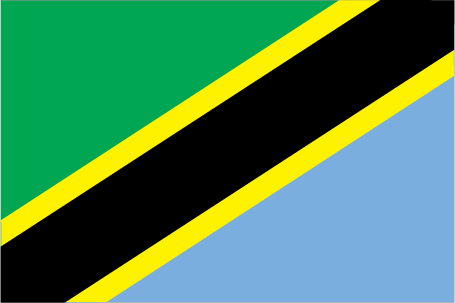To help inspire or plan your trip to Tanzania, some of its major attractions
for travellers are shown below, including some of the best natural, historical, cultural and adventure sites in the country.
These include all of UNESCO World Heritage Sites for Tanzania which represent the best
of the world's cultural and natural heritage.
Click on the icons below to focus on specific types of features
(click again to return to all).
|
|
|
|
|
|
|
|
|
|
|
|
 |
|---|---|---|---|---|---|---|---|---|---|---|---|
| Natural | History | Wildlife | Trekking | Cities | Religious Monument | Boat Journey | Rail Journey | Diving | Cultural | Adrenaline | UNESCO WHS |
Northern Tanzania - UNESCO World Heritage Sites
| Serengeti National Park | |
|---|---|
The Serengeti is the quintessential East African national park and perhaps the most famous, covering some 15,000 km² of savannah plains. The Serengeti boasts the largest concentration of plains game in Africa, with an estimated three million large animals, including some 2,500 lions. It is famous as the location of the annual migration of huge herds of wildebeest, zebras and gazelles as they travel between here and the Masai Mara in Kenya in search of fresh grazing lands, offering excellent chances to see kills by predators seeking nourishment of their own. UNESCO World Heritage Site: Serengeti National Park | |
| Ngorongoro Crater | |
|---|---|
The Ngorongoro Crater in northern Tanzania is one of the most unique and exciting wildlife reserves in Africa. Ngorongoro is actually a caldera, formed from a collapsed volcano millions of years ago, which now forms a huge natural amphitheatre with perhaps the greatest permanent concentration of wildlife in Africa. The crater's steep walls (over 600 metres high) enclose a vast space of 260 km² which includes open savannah, swamps, forests and the Lake Magadi soda lake, attracting flamingos and other water birds. Most large African animals are found in the crater (exceptions being giraffe and white rhino) and the crater's walls, balance of species and permanent water source mean they rarely leave. Of particular note are some 30 black rhino, the largest concentration left in Africa, and its famous lion population, though the 60 or so lions found there today are apparently suffering from the effects of inbreeding. Leopards, elephants, buffalo, hippos, hyenas and various prey species also call the Ngorongoro Crater home. You may also spot Maasai tribesmen lead their cattle down the crater walls - they have grazing and watering rights in the crater. UNESCO World Heritage Site: Ngorongoro Conservation Area | |
| Mount Kilimanjaro | |
|---|---|
Mount Kilimanjaro is Africa's highest mountain. It is a magnificent site, rising out of the surrounding plains, encircled in mountain forest, with its snowy peak 5,895m above sea level. Climbing Mount Kilimanjaro is one of the great trekking challenges in the world. Though not requiring any specialist mountaineering skills, it is still a fairly arduous task, with oxygen levels at its peak only half those at sea level. The view from the top, with hundreds of miles of the plains of Tanzania and Kenya below you, make all the effort worthwhile though. UNESCO World Heritage Site: Kilimanjaro National Park | |
| Kondoa Rock-Art Sites | |
|---|---|
These rock shelters on the eastern slopes of the Masai escarpment have been used for rock paintings for two thousand years, displaying art that provides fascinating insights to the socio-economic structure and spiritual beliefs of the societies that have inhabited the region. UNESCO World Heritage Site: Kondoa Rock-Art Sites | |
Southern Tanzania - UNESCO World Heritage Sites
| Selous Game Reserve | |
|---|---|
Selous Game Reserve in southern Tanzania has excellent game viewing away from the crowds of the more popular and famous national parks further north, offering an authentic and untouched African safari rarely found today. At almost 55,000 km² it is the largest wildlife sanctuary in Africa, four times the size of the Serengeti. Selous is home to elephant, buffalo, rhino, giraffe, waterbuck, hippo, leopard and lion amongst other species as well as abundant birdlife. UNESCO World Heritage Site: Selous Game Reserve | |
| Ruins of Kilwa Kisiwani and Songo Mnara | |
|---|---|
These are the remains of two great ports on small islands off the Tanzanian coast. Much of the Indian Ocean trade in gold, silver, pearls, perfumes, Arabian crockery, Persian earthenware and Chinese porcelain from the 13th to 16th centuries passed through these ports. UNESCO World Heritage Site: Ruins of Kilwa Kisiwani and Ruins of Songo Mnara | |
Zanzibar and Pemba - UNESCO World Heritage Sites
| Stone Town | |
|---|---|
Stone Town on Zanzibar is a centuries old East African trading port. The town is a maze of narrow streets and passageways with the remains of beautiful homes built by Arab traders made rich by trading gold, ivory and slaves. Zanzibar was once the largest slave market on the east coast of Africa and the remains of the slave market can be visited, where a 19th century Anglican church now exists. Stone Town also has many quaint shops and bazaars, excellent for souvenir shopping and watching the dhow silhouettes in the sea at sunset is magical. UNESCO World Heritage Site: Stone Town of Zanzibar | |







